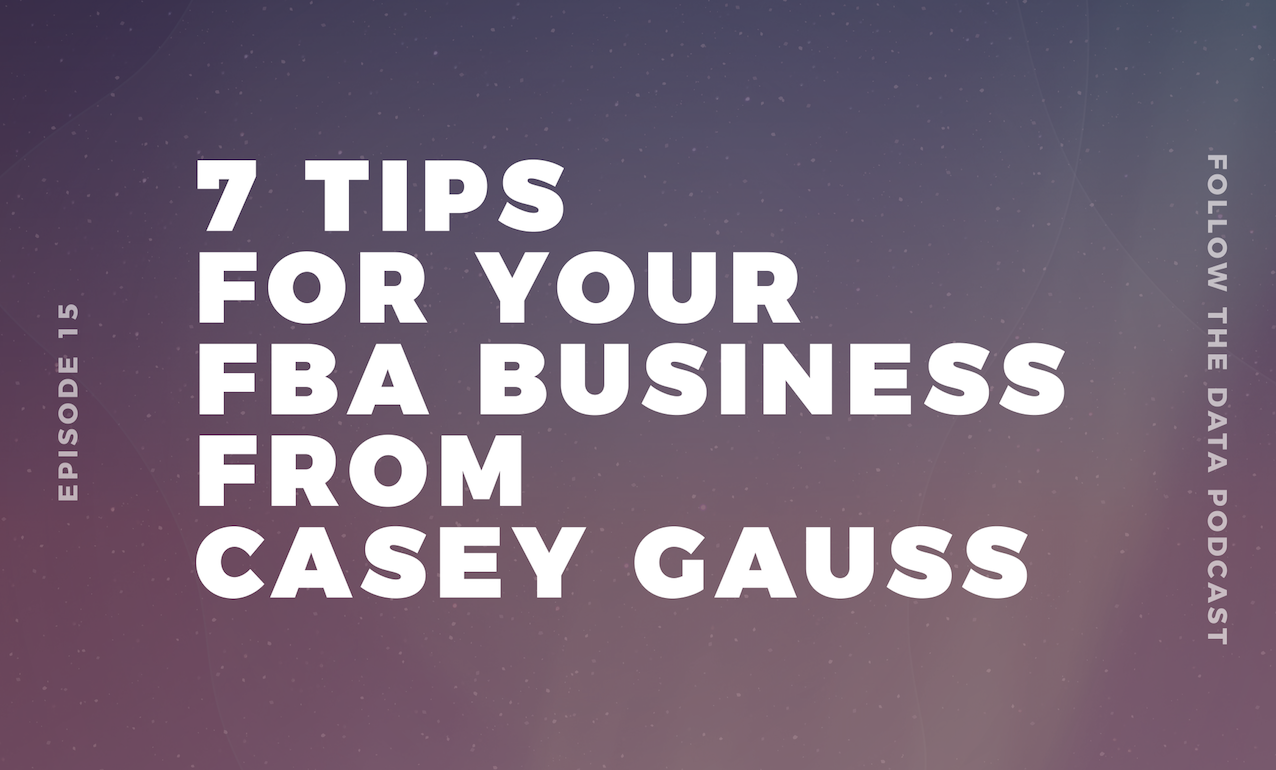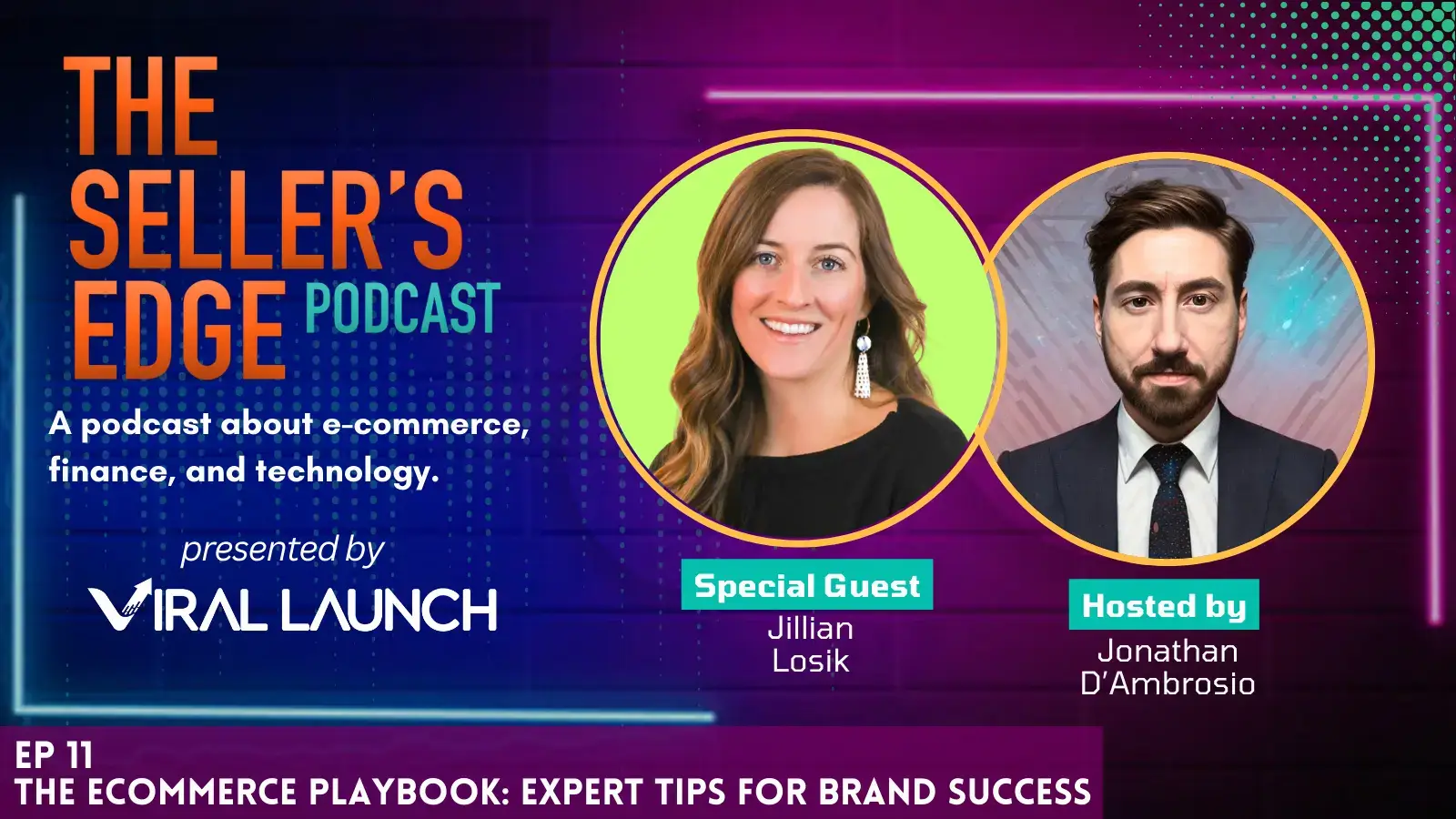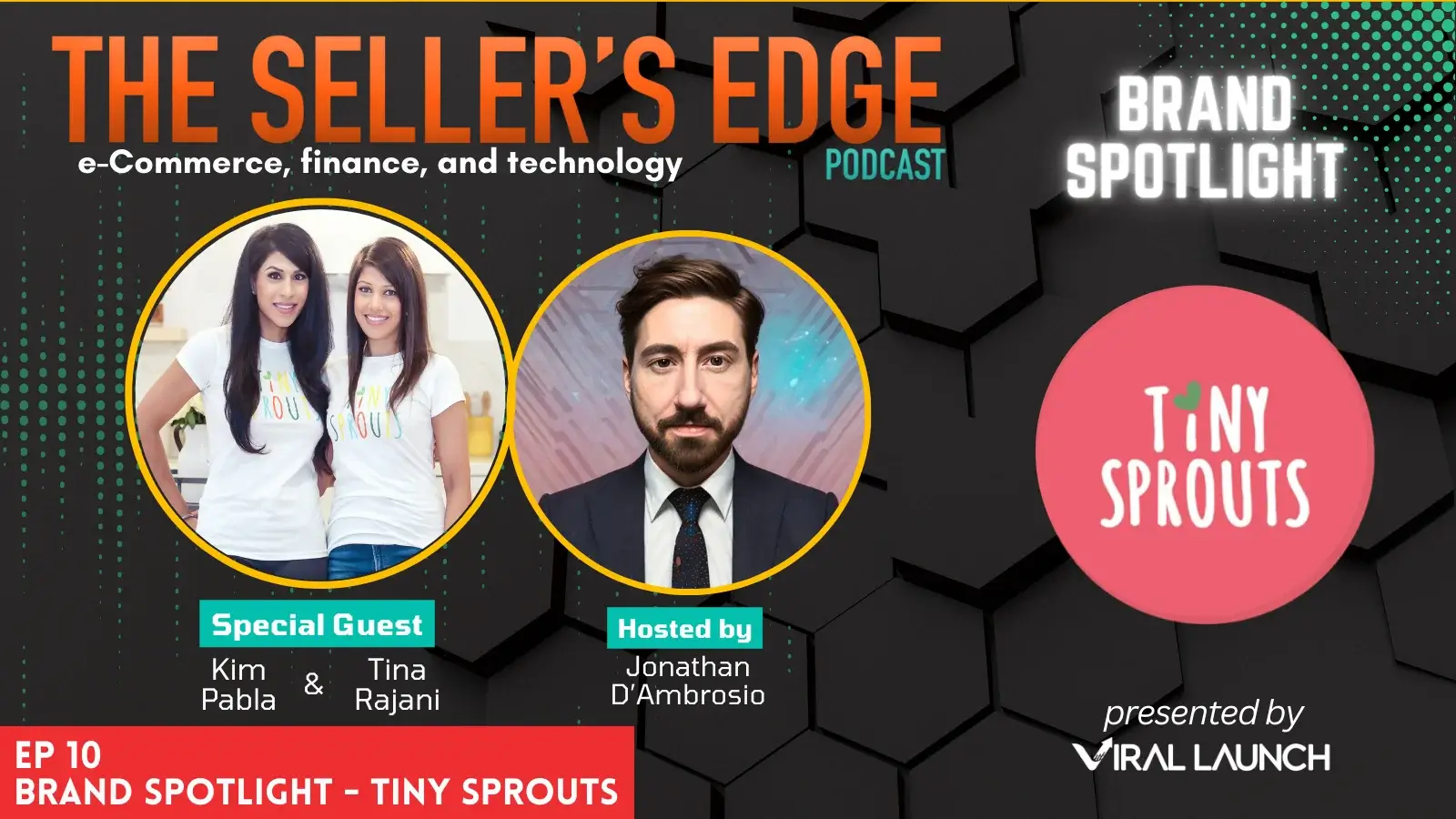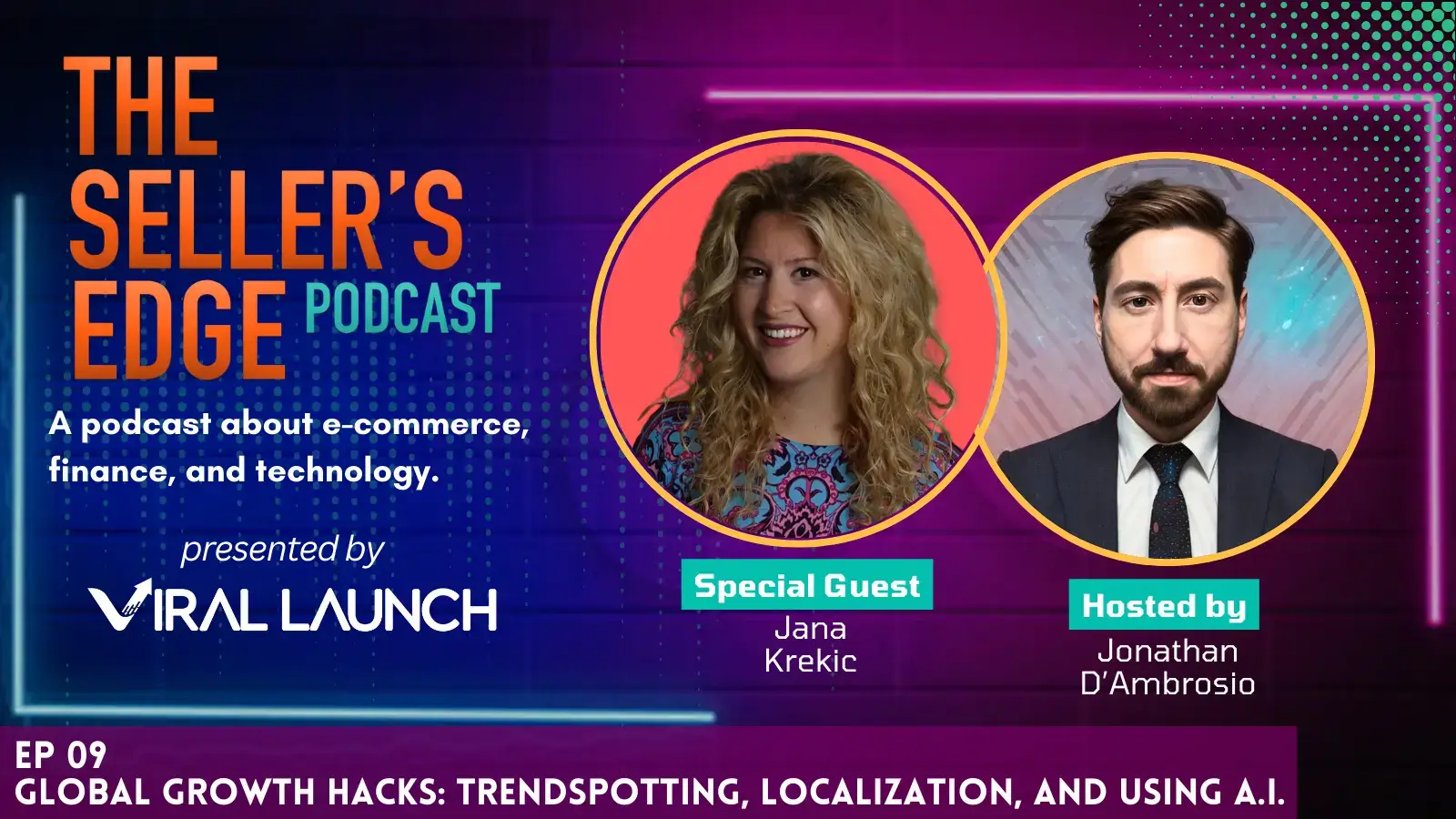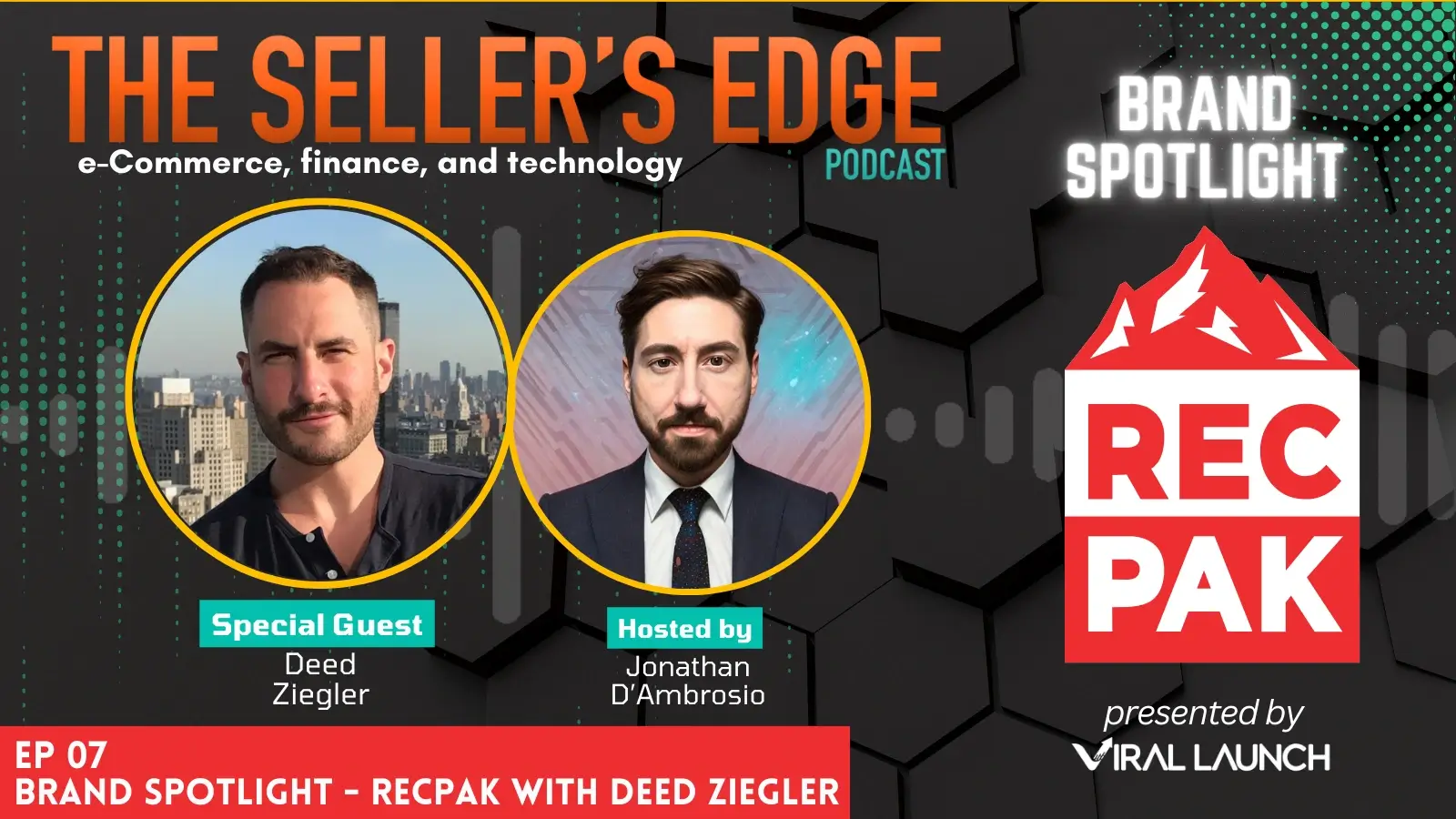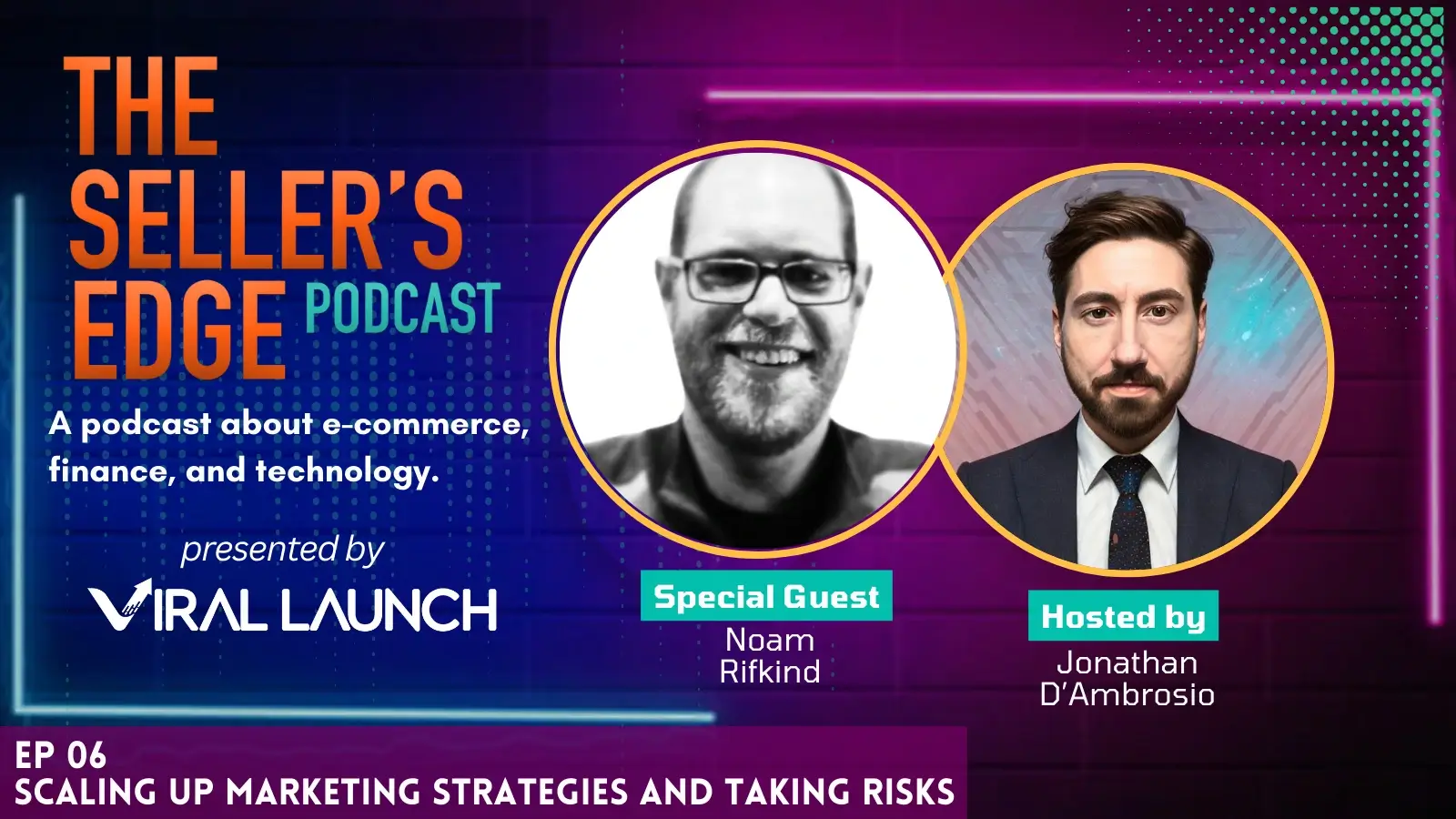Follow the Data Episode 15: 3 Tips for your FBA Business from Casey Gauss
Merry Christmas listeners! We’ve got a present for you: 7 tips for your FBA business courtesy of our CEO, Casey Gauss. As you set your business goals for 2018, these tips will help you focus on what will take your business to the next level. Looking to sell for the first time? Even better. Listen closely for advice about what pitfalls to avoid and what will set you apart from other Amazon Sellers.
Follow the Data Show Notes
- Check out this brief overview or this longer walkthrough of Product Discovery to learn more about how Product Discovery leverages data to help you find the most profitable Amazon products to source.
- Not sure how to use Market Intelligence? Here’s a full Market Intelligence walkthrough about how to get the most out of the tool.
- Reinvesting your Q4 profits is the best way to get the most out of your extra earnings. Think about what seasonal products you might be able to turn around in time for upcoming Q1 holidays.
- Looking for more reliable information from the Viral Launch? Check out our Dispelling Myths Series. Viral Launch takes on 4 common myths in the Amazon FBA community.
- Want to be on the show? Have your own story of entrepreneurial success? We’re working on an episode that features our listeners! Contact our content team with stories or questions about your Amazon business.
Podcast Transcript
CAMERON YODER:
Merry Christmas, everyone, and happy New Year. It’s the holiday season and the end of Q4 2017. As we head into 2018 we want to help you focus on what’s going to make your business as profitable and successful as possible.
CASEY GAUSS:
Today I’m giving out seven tips to grow your FBA business to help you get in the success mindset heading into the New Year. I am Casey Gauss.
CAMERON YODER:
And I’m Cameron Yoder, your hosts for Follow the Data: Your Journey to Amazon FBA Success. In this show we leverage the data we’ve accumulated at Viral Launch from over 28,000 product launches and our experience working with 6500 brands to help you understand the big picture when it comes to Amazon and, more importantly, the best practices for success as an Amazon seller. Let’s dive in.
CASEY GAUSS:
Cool, guys. So we’ll start kind of in the source, launch, dominate order. Tip number one coming to you through the kind of source perspective, tip number one is pay attention to the sales-to-review ratio when entering a market. Really what this means, you know, we call this the ROI ratio, but really what sales-to-review ratio is, it’s just a very simple calculation, estimated monthly sales divided by total review quantity, and really this is a calculation that does two things for you. One, it is showing you kind of what the reward is versus the amount of work you have to put in. So if I want the reward of selling 1000 units of this widget per month, then the amount of work I have to put in is to get to, you know, X number of reviews. So let’s say 100 reviews, right? So if I only need to get 100 reviews to sell 1000 units, that’s a sales review ratio of 10. And that sounds like a pretty awesome scenario considering or assuming that all the other metrics are good, so price point, margin and so forth. But you know that’s far better than having to get 10,000 reviews to sell 1000 units, right? So the sales-to-review ratio, just a really simple quick calculation to, you know, as this kind of litmus test for should I consider this market or not.
CAMERON YODER:
I’m still amazed at how many people don’t take this into consideration when entering new markets. And it’s a really simple concept. Like it doesn’t have to be that complicated. Really it makes sense if you’re looking at a market and you see a bunch of sales and a ton of reviews, then of course you’re going to have to, in order to compete well, have to get that review count up to match what the market’s at. But if you’re in a market with a low number of reviews and high sales, obviously that’s opportune for you to enter and do well.
CASEY GAUSS:
Yeah. Thanks, Cam. So tip number two, go wide, not deep. So a lot of people are always looking for that home run product that is going to, you know, make them wealthy overnight. We have a guy named Brock Johnson coming onto the podcast. In six months he sold like $6 million worth of one product. That’s a unicorn. It’s very tough to find unicorns if you’ve never seen one. So anyways, you know, it’s so much more practical to be able to go really wide and not very deep. So what that looks like is, you know, if I were jumping into selling on Amazon this is the strategy that I would take because this is what I see kind of a lot of people having success with. Anyways, what this looks like is going after products where maybe the maximum sales potential for that market is $10,000 or $15,000, $20,000, some fairly low amount. I guess it’s all relative because for a lot of people $10,000 a month is insane. But essentially what you’re looking to do is enter markets where competition is not very high and you know, there’s lessons in it for the big players with the big budgets who are going to, you know, maybe use black hat tactics against you or whatever to come into the market and try to hurt you and your business.
I see this all the time with supplements and cell phone cases and beauty products. You know, what happens is people end up – competitors will buy your products. They’ll say that they’re getting the products – you’re selling it new, but it’s coming used, you know, the seal was broken, or they up-vote your bad reviews, or they leave a bunch of bad reviews, or they leave a bunch of unverified five-star reviews to make it look like you are going and soliciting these reviews. There’s so many things that competitors will do, and it’s just such a headache to fight in these markets, especially if the markets are mature. It takes a lot of time, a lot of money to reach maximum sales potential versus going in these, you know, markets that are not very deep where you’re making, you know, $10,000 a month top line.
The nice thing about it is you don’t really have to worry about competitors if you find the right markets. It’s extremely easy to enter. You don’t have to spend that much time, that many resources, like achieving success with these products. It’s so easy to do that. And so I would much rather sell 10 products that do $10,000 a month than one product that’s doing 100 K a month, and the reason being, again, competition, ease of entry. A lot of the time going for these, you know, smaller products, it takes 30 days to reach maximum sales potential, or maybe 60 days to reach maximum sales potential and boom, you’re off to the next product. And you can just continue to iterate from there versus going after these $100,000 a month markets generally assuming that there is some degree of maturity around it. It’s going to take you quite a long time.
So I see plenty of people just going – you know, the biggest account that I know of these people that are going, you know, in these wide markets, or going wide versus deep is $30 million a year just in Amazon US. So these guys have a killer business, and they’re just going after all the, you know, low-hanging fruit opportunities. And I would highly suggest anyone jump into there that can or is looking to start sourcing in a different strategy or whatever. I think this is probably the fastest, simplest, you know, lowest headache opportunity to growing your business quickly.
CAMERON YODER:
I would even say – I would add to that a couple years back I think this looked a little bit different just because the market, the Amazon market as a whole, was pretty different where competition with the deeper markets was a little bit less than it is now. Not to say that going deep was better than going wide, but even now since competition is so fierce, especially in those deep markets, going wide is going to let you really look into those markets that people haven’t discovered yet and/or are definitely not as competitive as the deep ones.
CASEY GAUSS:
Yeah, completely agree. Awesome. So we will move on to the launch phase of your FBA journey. Tip number one, you know, I would still – we’ve been trying to, you know, kind of preach this so sorry if you’ve already heard this, but so many people still have not, and I think it is just a very, very simple hack to potentially dramatically increasing your sales. And what that is is you need to include both plural and singular forms of your words in your listings title. So in Amazon’s style guides or guidelines they say you don’t need to include both singular and plural forms. And they say that Amazon, you know, they already account for this in their algorithm, but it’s absolutely untrue. You know, just one quick anecdote. Someone is running a launch for grill gloves. I believe they had gloves in their title, but they were running a launch for a grill glove, and for a grill glove though, the key word that they’re targeting, they hit page 2 like top of page 2 for the launch and they were, you know, kind of disappointed that they didn’t hit page 1. But if you went and looked for the plural form, grill gloves, they were like in the top 10 on page 1 even though they weren’t targeting that word just because it was in the title. And so basically that just goes – and we see this all the time. So this just goes to show that, you know, Amazon does treat singular and plural forms of words differently. I mean if you want to go prove it or test it out for yourself literally search grill glove. Search grill gloves. There’s going to be different search results or in different orders. If there’s not, go try other words, fish oil, fish oils. Just go try a few singular and plural forms of the same word and you’ll see different order of words, different results, and the title has a lot to do with this. So it’s a very quick fix. But like, you know, seriously, the difference in ranking or the amount of keyword power that you’re driving to one word could be the difference of thousands of dollars, tens of thousands of dollars in revenue every month.
CAMERON YODER:
That’s an easy action step, too.
CASEY GAUSS:
So easy.
CAMERON YODER:
To simply go over, go over listing and see if you have both plural and singular forms of your main keywords.
CASEY GAUSS:
Yep, and then the second part to that tip is just don’t repeat words. So you know, let’s say this grill glove seller, they have grill glove then grill gloves and barbecue grill gloves in their title. You don’t need to repeat all those words. It should be in phrase order. So ideally as much as possible, right, so it would be something like, you know, grill gloves, best glove for grilling, or you know something like that. That was just off the top of my head, so probably wasn’t the best. But anyways, you kind of get the gist there. But anyways yeah, you have to have – even if it doesn’t make 100% sense, you know, let’s say you’re selling one glove. You should still have “gloves” in your title because people are searching gloves. Or let’s take a grill brush for example. People are inevitably searching grill brushes, right? Even though you’re only selling one brush you have to have the plural form because people are searching brushes, and by having that in your title when sales are driven through your listing you’re driving that much more power to the ranking for that plural form.
CAMERON YODER:
And by not you’re missing out on all that opportunity.
CASEY GAUSS:
Right. And competitors are. And then second tip for the launch phase is just being aggressive. We just see so many people kind of, you know, tiptoeing to success or waiting kind of for the success to come to them, and it’s just less and less likely every day as competition continues to increase. You really have to go after that success, and I mean really looking at opportunity costs. If you are taking six months to get a product up and, you know, hitting maximum sales potential you’re missing out on so much opportunity. If you did that and if you were more aggressive, hit maximum sales potential in three months you would have twice as much time to go after that second opportunity. And so now you have, you know, let’s say you repeat that with a second product, and so then within six months you have two products at maximum sales potential versus the one. So by going slow, yes it is probably more cost-effective or more cost-efficient, right? So you don’t spend as much money going and achieving that success, but by spending that money and being aggressive you have the opportunity to make that much more money.
CAMERON YODER:
We’re getting into the New Year now, and we’re going to touch more on New Year tactics later. But really this aggressiveness, this tip to be aggressive is a great one to hold onto moving into 2018, even to now, and understand it’s getting close to the end of 2017 and everyone’s going to be spending time with their family and the holidays and whatnot. But planning ahead for 2018, to actually sit down and plan how you’re going to be aggressive is honestly a great strategy, just to even plan it out and see what it looks like for you specifically. Again, reevaluating your goals and setting new goals to just flat out be aggressive among other things. But Casey, let’s move on to dominate. What have you got?
CASEY GAUSS:
Yeah, so three tips under dominate. First one, just reinvest your Q4 profits. I mean hopefully Q4 has been, you know, an amazing experience for you. Hopefully you broke some records and are just super, you know, proud of yourself and excited for what you’ve been able to accomplish. But you know, at least for my personality and if you, again, really look at the opportunity that still exists in the market, I think you really owe it to yourself and, you know, all the people that you are planning on helping with what you’re achieving here with your Amazon FBA business to just go super hard and reinvest those profits. You know, delay getting that Lamborghini or going on, you know, these month-long vacations. You still have so much opportunity. The last thing you want to do when you look back five years from now, 10 years from now is say dang, you know, that was a gold rush and I went to the Bahamas for a month while everybody else is panning for gold and hitting all these opportunities and, you know, I missed out. So anyways, reinvest your Q4 profits. The amount of success that we are seeing on Amazon is just insane, even to this day, and I just really want to encourage you to continue to take part in it. Delay the, you know, instant gratification, the short-term gratification for the long-term goals. So yeah, just reinvest your Q4 profits. Kind of a little reminder there.
Tip number two is go international. So we are planning on having some guys on the podcast that I met recently, and these guys did – in their first year of Amazon they did $10 million.
CAMERON YODER:
They’re killing it.
CASEY GAUSS:
And some other fun facts for you is one of them, still in school full time, and they are both 20 years old. And the other fun fact for you is that they have never sold anything in Amazon US, only international. There is so much opportunity internationally. You know, these guys, you know, they’ll share their story and everything, but there is just so much opportunity internationally. The competition is a fraction of what it is in Amazon US, and I really think that you need to take your resources, you know, hire someone, bring someone on your team to be general manager of internationalization or marketplace director. I don’t know, somebody to go manage your international business.
But there is so much opportunity, and you really want to get in on the ground floor. I mean a lot of the like really successful folks in Amazon US that I know are all people that jumped in in 2014 or maybe 2015, and they went super hard when Amazon was so much easier. And now that Amazon has, you know, really dramatically increased competition and there’s so many additional sellers here, a lot more money going into driving success, it’s so much more difficult. But if you go look in the international markets, in the majority of these markets it’s Amazon 2014 still. And so you need to get in on the ground floor when, you know, Amazon is still – you need to ride that wave of success. So you know you’re on the ground floor. Revenue or revenue potential is just going to continue to increase internationally, but so will competition. And if you’re in, you know, on the ground floor you already will be ranking. You’ll already have the review quantity, and you can just ride that wave up.
CAMERON YODER:
It’s going to be – granted, it’s going to be a little bit different. I don’t think you should go into international markets expecting the same exact process as the United States, but these guys that we’re going to bring on later are examples that, guys, there are no excuses. At 20 years old they are killing it. They’re making bank, and they haven’t sold a single thing in the United States. So if that’s not proof as to what can be possible in international markets, then I don’t know what is. But that, I think that should be part of your long-term strategy, planning, right, to sit down and if international is something you’re interested in, find out more about it, do your research, and then dive in. All right, Casey, what’s tip number three?
CASEY GAUSS:
Tip number three, so basically just never go out of inventory. We see so many people make this mistake, and you know, sometimes it’s inevitable. Sometimes your projections are way off, which is a good thing hopefully. But anyways, there can just be a lot of, you know, downside to going out of inventory. So essentially, you know, just make sure that you are planning accordingly. You know, look at something like market intelligence where you’re able to see kind of the market trends and understand to what degree sales are increasing, decreasing and, you know, how long the increase or decrease will sustain just so you have a really accurate, you know, indication of what to expect or how the market will perform over the, you know, coming X number of months that you need to plan inventory for. And then secondly, like so it may be too late, or it’s probably pretty close to too late if it’s not already.
CAMERON YODER:
Honestly, actually yeah, by the time this podcast is out it’s probably going to be too late depending on the production time for your product.
CASEY GAUSS:
Yeah, I mean so the Chinese New Year is coming up, and I think it’s like early February to early March. Factories are closed down for a month, and before and after that, you know, it’s like, it’s just crazy production because they’re trying to fit everything in before and after for all the people that missed out. And so hopefully you’ve already ordered your inventory in preparation for Chinese New Year, especially if you’re wanting to launch new products. If not, like that can delay your time to getting that product up and running, you know, so far. But yeah.
CAMERON YODER:
This – it’s Friday, December 22nd, and I do know that a lot of manufacturers are taking orders this week in order to get products to you before the Chinese New Year. But with this area specifically, talking about inventory, guys, I honestly think it’s much better to play safe than sorry with this. And so it’s better to overcompensate for inventory here. And sure, you’re going to spend maybe a little bit more money, and you need to figure out how much money you have to play around with ordering inventory and different strategies with that. But it’s better to order a little bit more inventory than it is to run out of inventory and have to wait maybe a week to two weeks before you get your next shipment in. So plan ahead. Plan accordingly. Play it a little safe on this one.
CASEY GAUSS:
I think that’s pretty much all for me.
CAMERON YODER:
Yeah, well okay. That’s all for this week. Thank you guys so much for joining us here on Follow the Data. For more FBA tips and reliable information that will help take your Amazon business to the next level, subscribe to the podcast and check out the Viral Launch blog at viral-launch.com.
CASEY GAUSS:
Guys, we’re all Amazon sellers. We know the most difficult part of your Amazon business is getting reviews.
CAMERON YODER:
So hard.
CASEY GAUSS:
So hard. Please help us get reviews. If we could we would go review your product, but we don’t want to get you shut down. But by you reviewing this podcast we will not get shut down, so we would love your help on this. I mean really at the end of the day if you know anything about me or the company, like we just love honest feedback. So whether it’s in a review or whatever, any feedback just so we know how are we doing, what do you guys want to hear, you know, maybe our approach isn’t the best. Maybe you want us to use voice changers because you don’t like our voice, I don’t know. Anyways, we just love feedback. So yeah, thank you so much.
CAMERON YODER:
We’re also doing – we’re currently doing weekly webinars where we’re going through, walking through product discovery and different strategies that you can use to take advantage of the tools. So if you haven’t seen those yet keep an eye out for those. We do it every – typically every Thursday. But again, we just wanted to say thank you so much for listening. Happy holidays. We hope everyone has a great New Year. And don’t forget if you want to be featured on the show, or if you have an Amazon-related question or an idea for an episode you can leave us a voicemail. Our number is 317-721-6590. Until next time, remember the data is out there.
